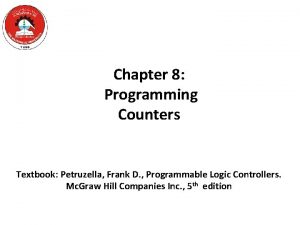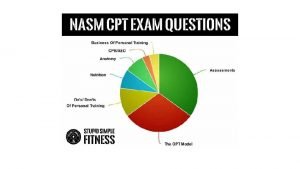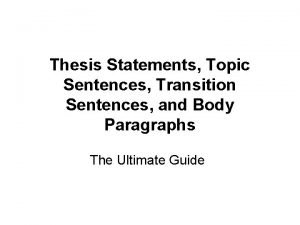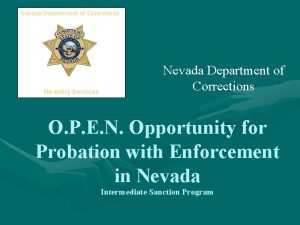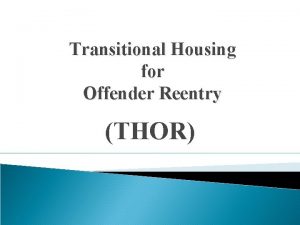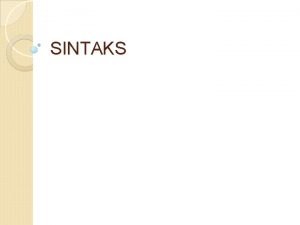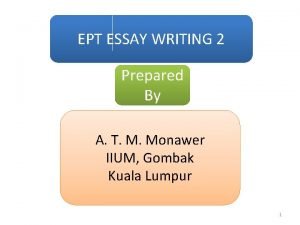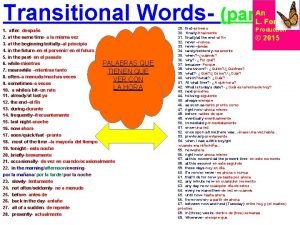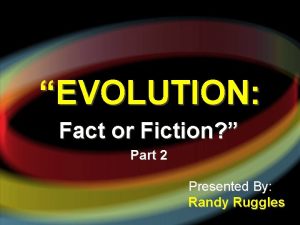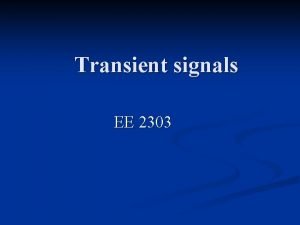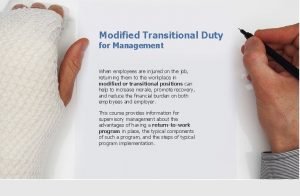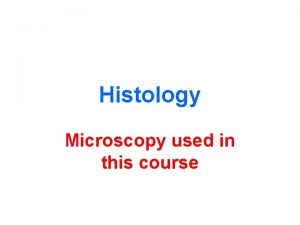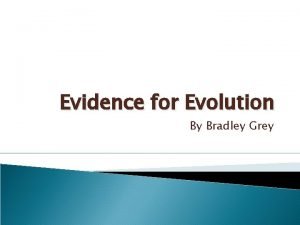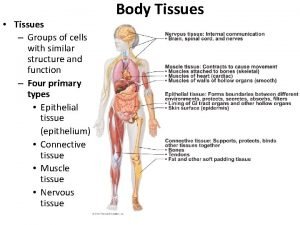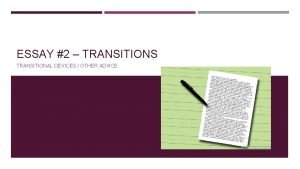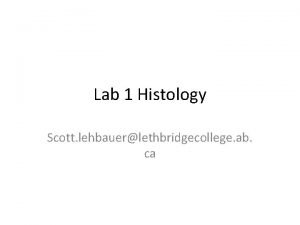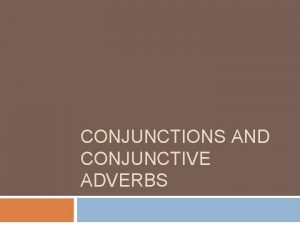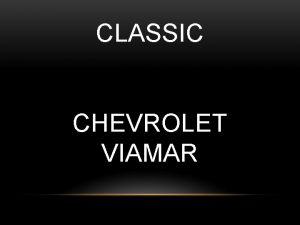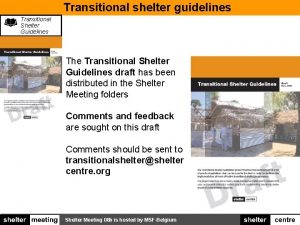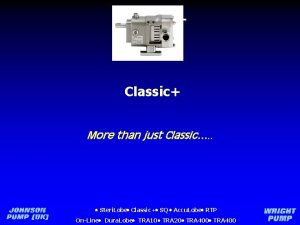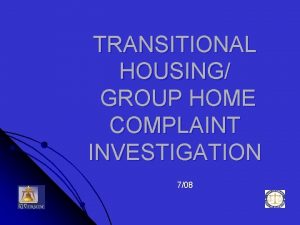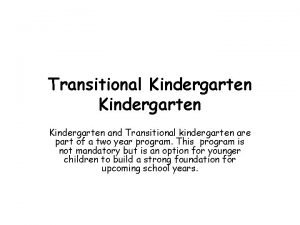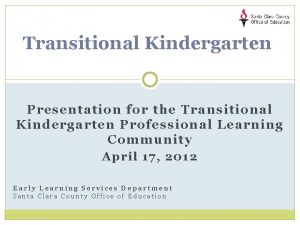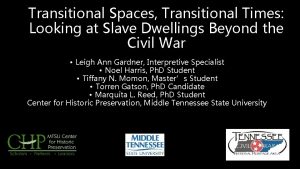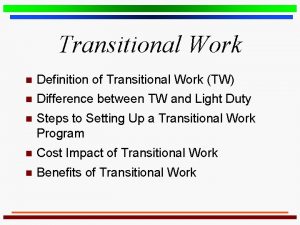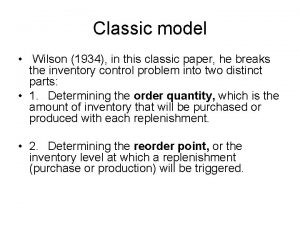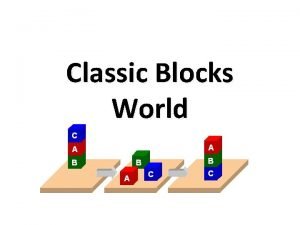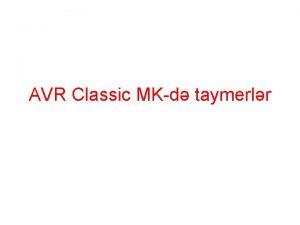StagesTypes in the Western Classic western Transitional western













































- Slides: 45

Stages/Types in the Western • Classic western • Transitional western • Professional western • Revenge western • [Parody]

Oppositions: The Classic Western • • • hero/society good civilization strong inside society vs. vs. vs. villains bad wilderness weak outside society

Oppositions: The Professional Western • • • hero outside society wilderness strong good vs. vs. vs. society inside society civilization weak bad

Progression (and Propp) 1. The hero enters a social group. 2. The hero is unknown to the society. 3. The hero is revealed to have exceptional ability. 4. The society recognizes a difference between itself and the hero; the hero is given special status. 5. The society does not completely accpet the hero.

continued 6. There is a conflict of interests between the villains and society. 7. The villains are stronger than the society; the society is weak. 8. There is a strong friendship or respect between the hero and villains. 9. The villains threaten society. 10. The hero avoids involvement in the conflict. 11. The villains endanger a friend of the hero.

continued 12. The hero fights the villains. 13. The hero defeats the villains. 14. The society is safe. 15. The society accepts the hero. 16. The hero loses or gives up his special status.

The Searchers • Director: John Ford • Release date: 1956



Characters • • • Ethan Edwards Martin Pawley The Jorgensons Chief Scar Debbie Edwards




Content 1. Why does Ethan return to his brother’s house? What relations does he have to the household? 2. Why are the men sworn in as Texas rangers? 3. What was the reason for the cattle raid? 4. What conflicts arise between Ethan and the others in the party during the first search? 5. What motivates the search after it seems apparent that it is futile? 6. What block Martin from continuing the search with Ethan? 7. What information is picked up at the trading post about Debbie?

Content 8. What events arise later with Futterman? 9. How does Martin “acquire” a wife? 10. What transpires at the US Army camp with the white captives? 11. How do they finally get reliable news of the Comanche? 12. What discovery is made in Scar’s camp? 13. Why does Debbie refuse to go with Ethan and Martin? 14. Why are Ethan and Martin threatened with arrest? 15. What prompts the attack on Indian camp? 16. How is Debbie finally “rescued”?

Civilization and Wilderness • What are the components of civilization? • What is a wilderness? • How are these terms informed by ideology?

Civilization/Wilderness • Critics note the civilization/wilderness dichotomy in this film, and in the tendencies of the Western from this period (mid-1950 s on). • Who and what represent the two sides of this opposition? • Which characters are suspended between them? • Which side is endorsed, or is this left ambiguous?



Representation of Family • How is the family depicted at the start of the film? • What representations of gender are dominant? • Are spheres of activity gendered? • Why is Ethan’s relation to Martha problematic?

Indian-Ethan-Settler • Indian/Settler themes: the role of land ownership, property, language, rationale for action. • Consider how Ethan is in fact to some degree “inside” Indian culture—he understands Comanche language, understands Comanche spiritual beliefs and social systems, and is able to “inhabit” their world along somewhat of the same lines that they do. • What does this inside status mean given his hostility towards Indians?

Cultural/Ethnic Difference • • • 25. 30 (Comanche burial site) 40. 20 (discovery in Comanche camp) 1: 01. 35 (Martin gets a wife) 1: 13 (the “white” survivors) 1: 23. 30 (the scalps)

What is white? • What motivates Ethan’s racism? • How are white and Indian culture(s) compared, even cross-referenced in the film? • Consider the army commander’s remark—“It’s hard to believe they’re white. ” And Ethan’s reply: “They ain’t white—anymore. ” • What makes someone white in this film?

The Vengeance Western • What are some motives for revenge? • What other examples of film (or literature) can you think of which contain this theme? • How does this narrative (or others) problematize the idea of vengeance—clearly, I mean the doubling of Ethan and Scar?

Gender • What range of gender relations are raised in the film? • Reflect on Ethan, Brad, and Martin—do they represent types? • You might add Charlie, Mr. Jorgenson, and any others you can think of.



Really Indian? • We may get the impression that submersion in Comanche culture is necessarily the destruction of white European culture. • This appearance gives rise to the idea that Comanche culture is not Indian, but something more symbolic. • Why, in fact, would predominantly white audiences be interested in watching such a conflict when the Indians had been exterminated for close on 100 years?

Limits of the Western Hero • John Wayne is a psychopathic bastard in this film. • How does he test the limits of the Western hero (or of any hero)? Does he compare with any literary heroic type you know about? • Why is he unable to be reintegrated into society at the end?

MDC

“John Wayne Was a Nazi” John Wayne was a Nazi. He liked to play SS. He had a picture of Adolph, Tucked in his cowboy vest. Well, he would string up your mama. I’m sure he would torture with your pop. I’m sure he would march you up to the wall. I’m sure he would hang you by your left ball.

Chorus He was a Nazi. Not anymore. He was a Nazi. Life evened the score. He was a Nazi. Not anymore. He was a Nazi.

John Wayne slaughtered our Indian brothers. Burned their villages and raped their mothers. Now he has given them a white man’s Lord. Live by this, or die by the sword. Chorus

John Wayne fought a lot of gooks in the war. We don’t give a fuck about John anymore. We know his tale of blood and gore. Just another pawn for the capitalist whore. Chorus

John Wayne wore an army uniform. Didn’t like us reds and fags that didn’t conform. Great white hero had so much nerve. Lived much longer than he deserved. Chorus

Late show Indian or Mexican dies. Klan propaganda legitimized. Hypocrite coward never fought a real fight. When I see John I’m ashamed to be white. Death bed Christian of this you avowed: If God’s alive, you’re roastin’ now. Well John, we ain’t got no regrets, As long as you died a long and painful death

Stagecoach vs. Searchers • This film is directed by John Ford and stars John Wayne—the same set-up as Stagecoach, but seventeen years later. • Much happened between 1939 and 1956 (like what? ). • Do you detect evidence of these outside social changes in the films?

Updating • If film, especially genre-based film, is an indicator of a cultural situation, what doe this movie suggest about the United States of 1956? • What was going on in this time period?

Instructions: Response #2 • Choose one topic; write a response of 500 words or more. • Follow the guidelines outlined in the worksheets. • Due Date: April 27

Topics #1 and #2 1. Analyze one film from the technical point of view of its composition (mise-en-scene, cinematography, or montage). Limit your scope to a few terms. 2. Analyze the genre conventions in one film. Discuss how the film conforms to or departs from genre expectations, or how it is a hybrid or parodies conventions.

Topics #3 and #4 3. Discuss the ways heroes and villains are coded in two films. By coded, I mean what conventions are used by which they are recognized? To expand this topic, you might consider how the villain can be more attractive than the hero, and why a director would present his or her character in this way. 4. The setting in films can function as a metaphor or symbol. Discuss how setting is connected to action, tone, and/or meaning in two films from our course. You may compare or contrast your choices if you wish.

Topics #5 and #6 5. Taking Bordwell and Thompson’s claims about “natural” and “unnatural” as your starting point, discuss Léger’s Ballet méchanique. What might Léger’s point be in creating these juxtapositions? Try to be as specific as possible. I would organize this paper around specific images or moments in the film. 6. Discuss the use of symbols in Entr’acte. Note that you may have to give some reasons for interpreting certain events or scenes in certain ways.

Topics #7 and #8 7. The term microcosm can be applied to the films Stagecoach and The Outlaw Josey Wales. Choose one of these films and explain how the idea of a microcosm functions. 8. Discuss changes in the representation of Indians (or other minorities) in two or more westerns. I urge that you find a main point structure for this topic.

Topic #9 9. Discuss the uses of violence in two or more westerns. You might consider the function of violence, its implied or graphic nature, the way it generates or blocks sympathy, etc.

For Next Time • Watch: The Outlaw Josey Wales
 Epithelia
Epithelia Simple cuboidal epithelium function
Simple cuboidal epithelium function What tissue is this
What tissue is this A one-shot, or transitional, contact:
A one-shot, or transitional, contact: Dynamic postural assessment: overhead
Dynamic postural assessment: overhead Transition sentences for body paragraphs
Transition sentences for body paragraphs Casa grande transitional housing
Casa grande transitional housing What causes uti
What causes uti When to use hence and thus
When to use hence and thus What is this structure
What is this structure Transitional medical assistance ohio
Transitional medical assistance ohio Thor directory
Thor directory Hugnayan example
Hugnayan example Torrance memorial human resources
Torrance memorial human resources Stratified columnar
Stratified columnar Transitional words
Transitional words For against essay structure
For against essay structure Transitional expressions
Transitional expressions Aquatic areas
Aquatic areas Evolution fact fiction or opinion
Evolution fact fiction or opinion Transitional signals
Transitional signals Transitional duty
Transitional duty Simple cuboidal epithelium tissue function
Simple cuboidal epithelium tissue function Transitional epithelium
Transitional epithelium Positioned between horizontal and vertical lines
Positioned between horizontal and vertical lines Transitional fossils
Transitional fossils Transitional math illinois
Transitional math illinois Similar pics
Similar pics What are transitional devices
What are transitional devices Transitional epithelium
Transitional epithelium Dynamic postural assessment
Dynamic postural assessment Urolith
Urolith Basement membrane
Basement membrane Simple squamous epithelial cells under microscope
Simple squamous epithelial cells under microscope Conjunction adverb
Conjunction adverb Simple cuboidal epithelium
Simple cuboidal epithelium Các châu lục và đại dương trên thế giới
Các châu lục và đại dương trên thế giới Chúa yêu trần thế alleluia
Chúa yêu trần thế alleluia Hổ đẻ mỗi lứa mấy con
Hổ đẻ mỗi lứa mấy con Từ ngữ thể hiện lòng nhân hậu
Từ ngữ thể hiện lòng nhân hậu Diễn thế sinh thái là
Diễn thế sinh thái là Vẽ hình chiếu vuông góc của vật thể sau
Vẽ hình chiếu vuông góc của vật thể sau Làm thế nào để 102-1=99
Làm thế nào để 102-1=99 Tỉ lệ cơ thể trẻ em
Tỉ lệ cơ thể trẻ em Lời thề hippocrates
Lời thề hippocrates đại từ thay thế
đại từ thay thế



